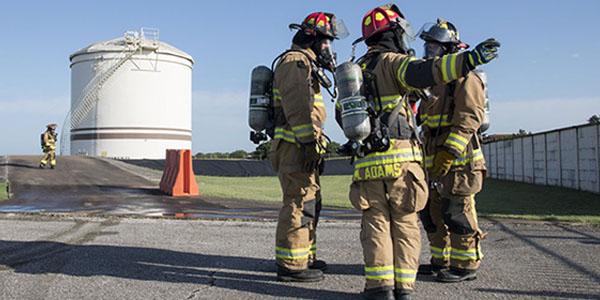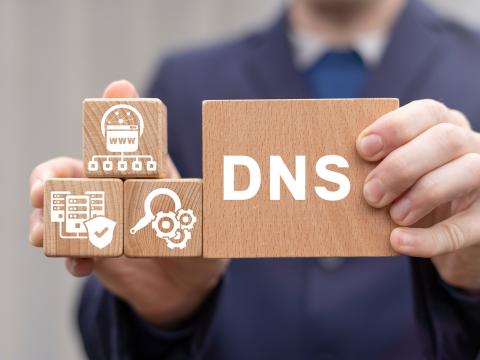Securing Against Possible Electromagnetic Pulse Attacks
Officials from the city of San Antonio, Joint Base San Antonio, other stakeholders and the region’s municipal energy company are moving to protect critical infrastructure against potentially damaging electromagnetic pulse attacks. The efforts include a pilot program, related analysis and a plan that addresses long-term operations in case of an electromagnetic pulse attack.
The region is pursuing the comprehensive efforts based on a March 2019 Presidential Executive Order (EO) 13865, “Coordinating National Resilience to Electromagnetic Pulses.” The EO set policy for electromagnetic pulse preparation, directed entities to examine how to protect, respond to and recover from such an attack.
“It is the policy of the nation to be EMP [electromagnetic pulse] resilient,” said Col. Michael “Apollo” Lovell, USAF, executive director, Joint Base San Antonio's Electromagnetic Defense Initiative (JBSA-EDI). Organizations also must collaborate with other stakeholders, share threats, identify vulnerabilities and conduct assessments.
“One of the threats is a geomagnetic disturbance, which will happen. There is a 100 percent chance,” he said. “On average, there is a 12 percent chance per decade. It is three more times likely than a house fire. On the man-made side, a high-altitude EMP or a nuclear weapon can also be a threat. It is low probability, but it has major consequences if it occurs.”
Col. Lovell, who also is dual-hatted as the director of Intelligence for the Texas Air National Guard, spoke as part of a panel at AFCEA Alamo’s Virtual Monthly Luncheon on July 21.
In addition to Col. Lovell, the other panelists speaking at the luncheon included: Lt. Col. Eddie “Thumper” Stamper, mission director, JBSA-EDI; Fred Bonewell, chief security, safety and gas solutions officer, CPS Energy; and Jody Little, manager, Information Exploitation, Defense and Intelligence Solutions, Southwest Research Institute.
In his role with the JBSA-EDI, Col. Lovell is focusing on protecting the systems and utilities at the Defense Department’s largest Joint Base—which includes 11 installations, 266 mission partners, and 80,000 employees. The base is participating in the San Antonio Electromagnetic Defense effort, in which the executive director leads a task force of 330 people and 70 organizations across the San Antonio region and at the federal level. That effort involves four working groups, which include: infrastructure resilience, 5G cellular risks and opportunities, policy and education, and blackout recovery. The leaders have to provide deliverables, including demonstration of EMP hardened infrastructure through exercises, a 5G experimentation site, education programs, influencing doctrine and creating an EMP playbook for the base commander’s review, in addition to approval from local government and businesses.
Col. Lovell also is in charge of implementing Fifth Generation cellular technologies at the base and is leading the separate 5G experiment as part of the San Antonio Electromagnetic Defense effort. In addition, the colonel is a member of the Department of Homeland Security (DHS) Cybersecurity and Infrastructure Security Agency's Power Resilience working group and the Defense Department’s Electromagnetic Pulse Executive Order subgroup.
“When you say JBSA-EDI, what does that mean,” the colonel states. “Think about a long-term regional power outage where no one is coming from another state to help you. We want to ensure JBSA continues military operations in a post-EMP [electromagnetic pulse] environment. And we are creating a model that can be replicated throughout DOD.”
The initiative also includes a dissuasion strategy, the colonel said, adding, “We don’t want our enemies to believe that an EMP [electromagnetic pulse attack] could be successful.”
In May, DOD’s Office of Nuclear Matters selected San Antonio to be their pilot program in support of the EMP executive order, the colonel explained. “We are really proud of that,” he said. And in June, DOD’s Office of the Undersecretary of Defense selected the base to be one of seven bases for a 5G experimentation site.
The efforts to harden infrastructure against an EMP event involves protecting water, waste, gas and electric utility equipment and systems, as well as transportation and communication systems, including 5G, Col. Lovell specified. The goal is to build resiliency in the infrastructure, mount an electromagnetic defense and ensure that the base and the city can successfully continue to operate after an electromagnetic pulse attack.
In addition, the colonel is working on an emergency management tabletop exercise with the city of San Antonio for August, which will help inform an EMP annex that will be part of the 502nd Air Base Wing’s Installation Emergency Management Plan.
At the utility, Bonewell is leading CPS Energy’s Grid Hardening Project, which has evolved over the last two years. The first phase of the project brings physical security upgrades to 11 substations, which are providing power to JBSA facilities. “This is about grid resiliency, and this is about collaboration,” said the utility official. “And it is not just about CPS energy. It is about our military and San Antonio and the region that we operate in.”
The substation upgrades are meant to protect against a wholistic threat scenario across the grid, Stamper explained. Officials are working with the Alamo Area Council of Governments, with a grant to CPS Energy to harden substations against cyber attacks, vehicle damage, bombing and other risks. “We have a plan,” he said. “It is our first project and CPS has a very aggressive schedule to implement it." He added that a few other utilities have taken a similar approach to grid resiliency.
The Department of Homeland Security also recently selected San Antonio for a project to revamp the city’s emergency communications, including systems connected to CPS Energy and the San Antonio water system. That effort, anchored with San Antonio Office of Emergency Management, involves a year of analysis followed by implementation of solutions, Little stated.
“The resiliency of San Antonio is the resiliency of the base,” Col. Lovell said.





Comments